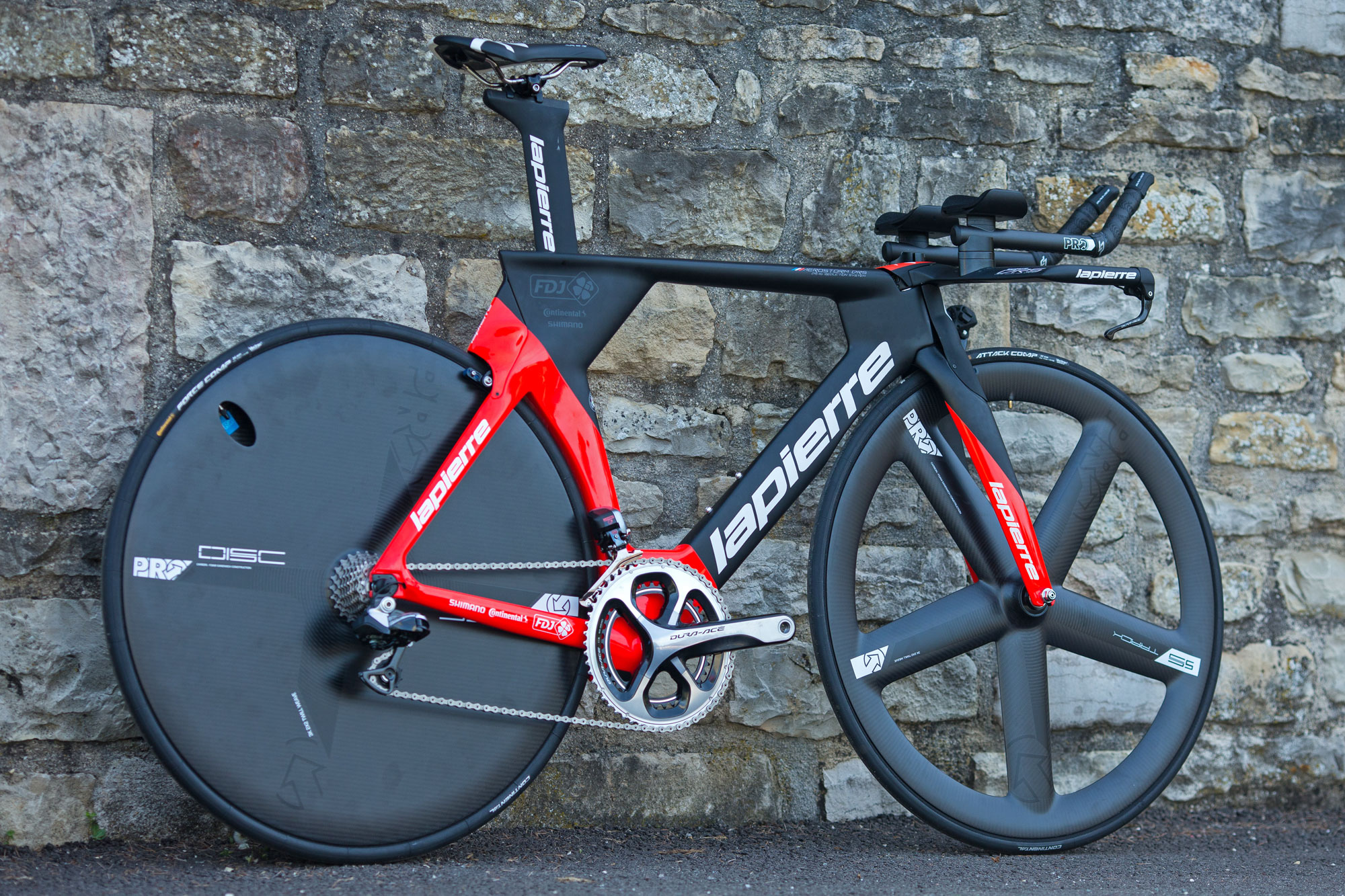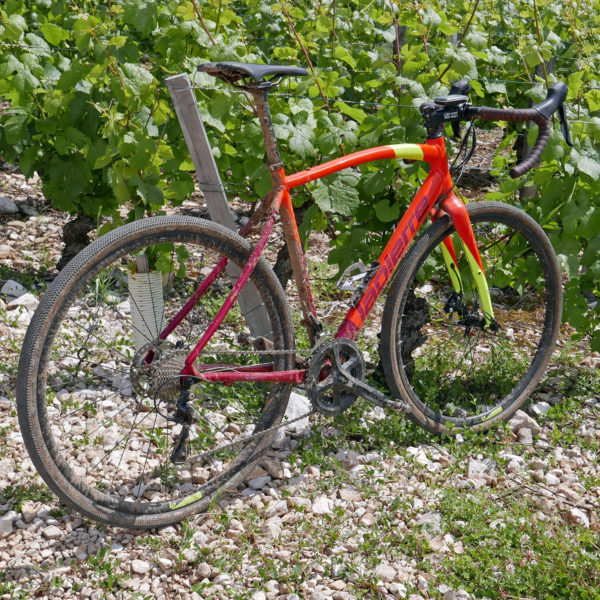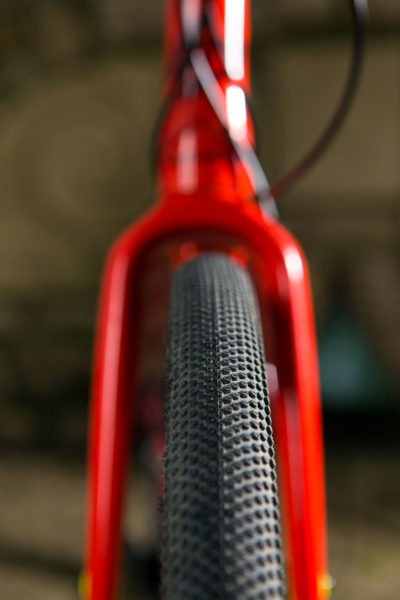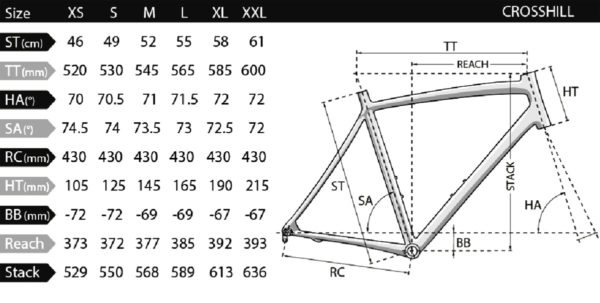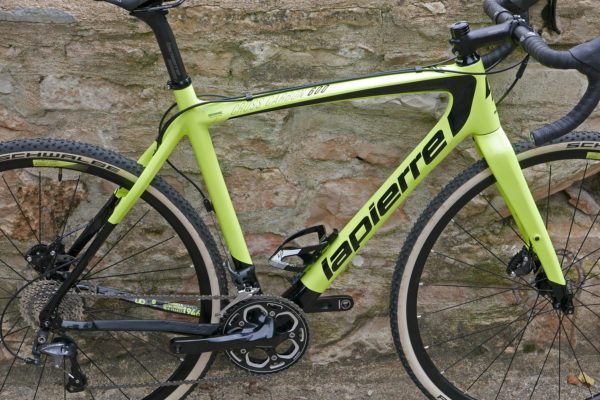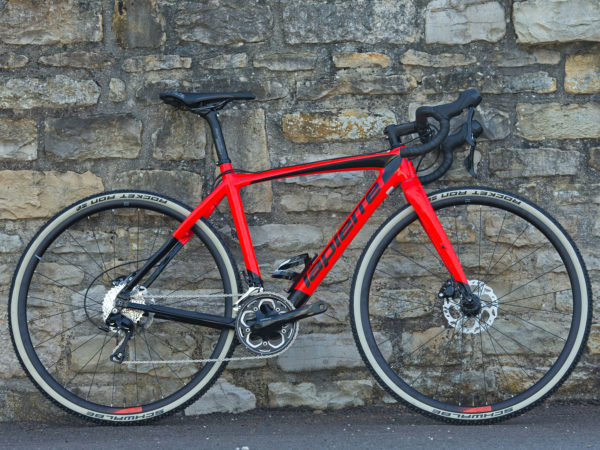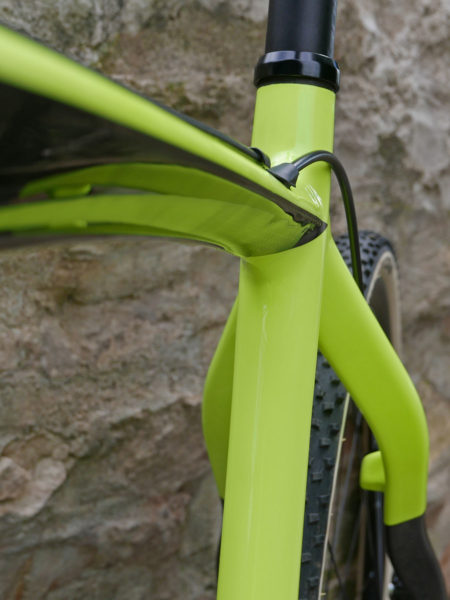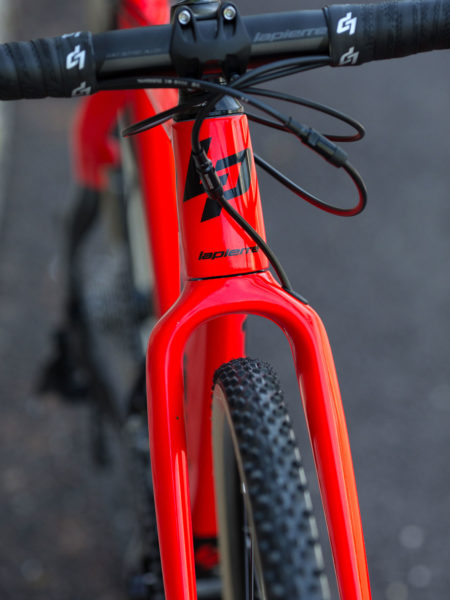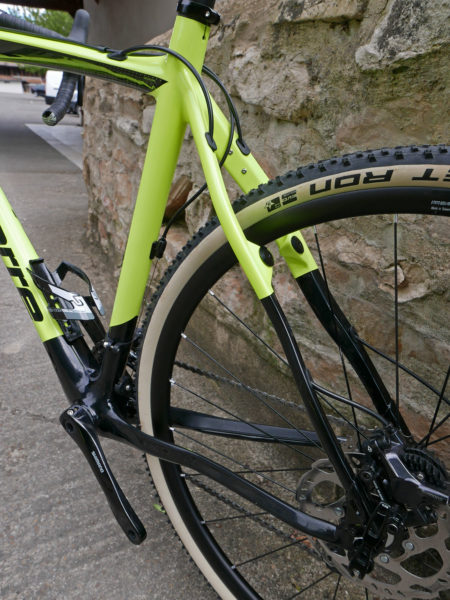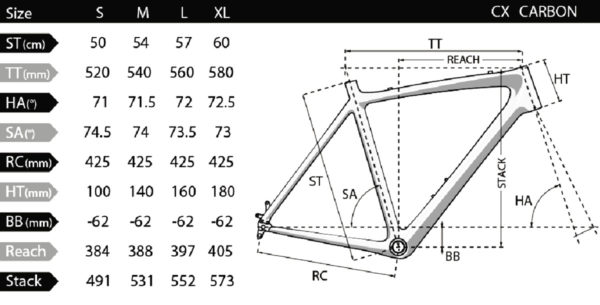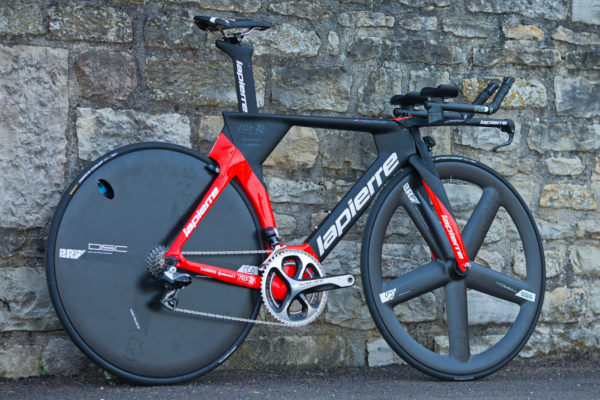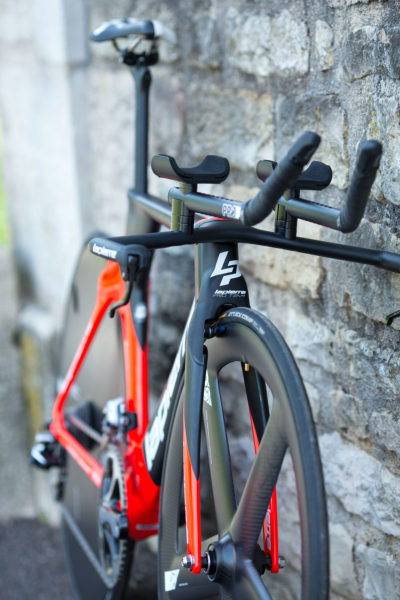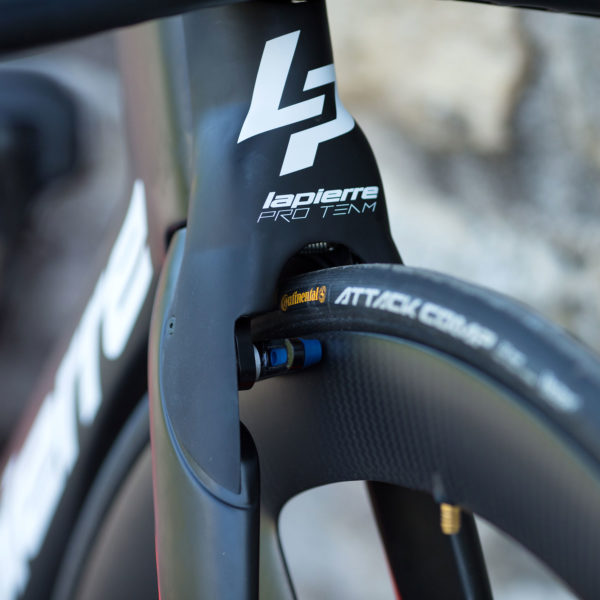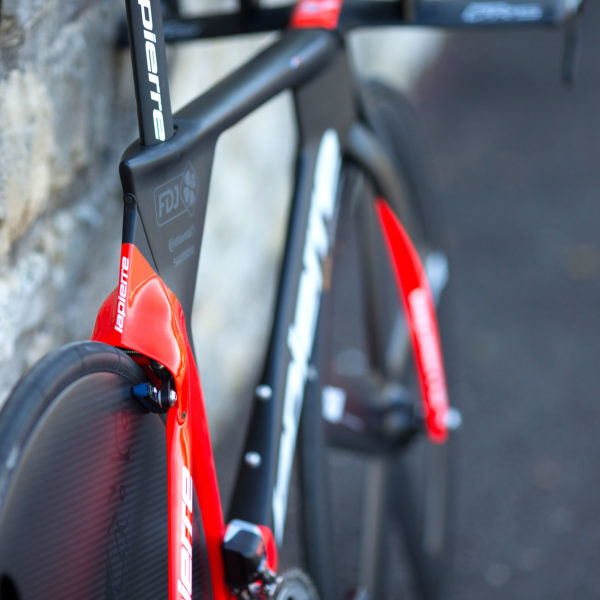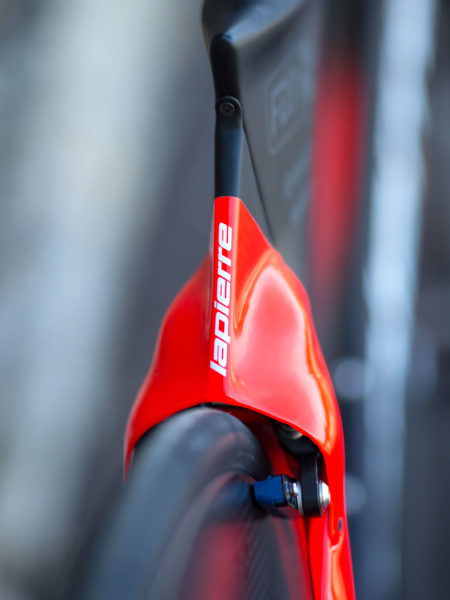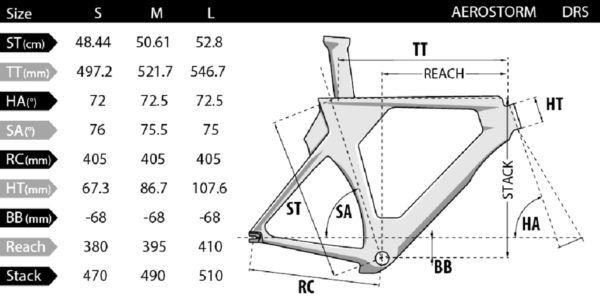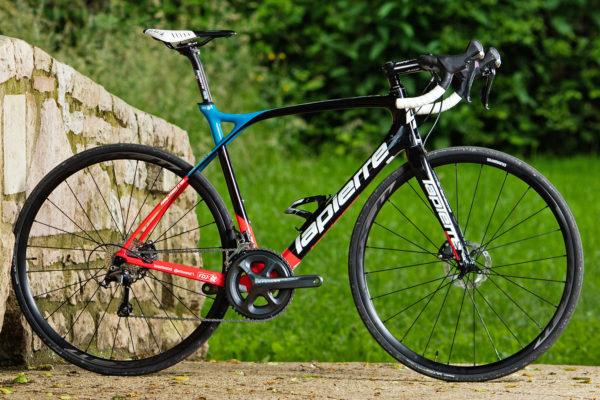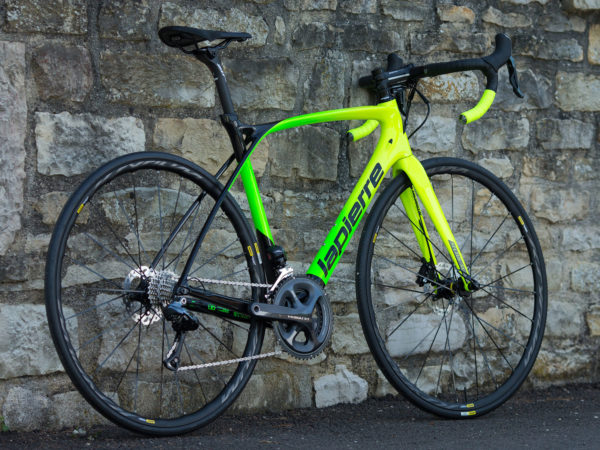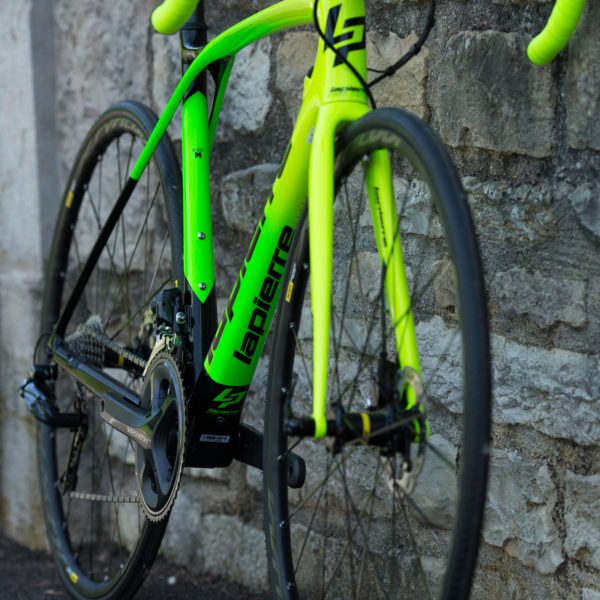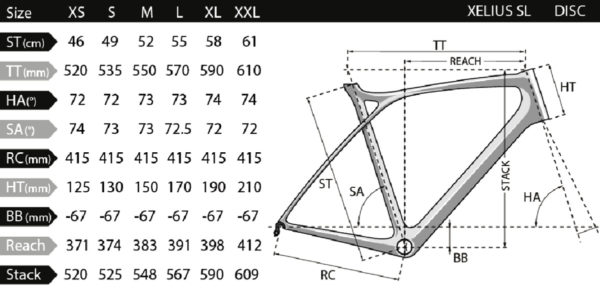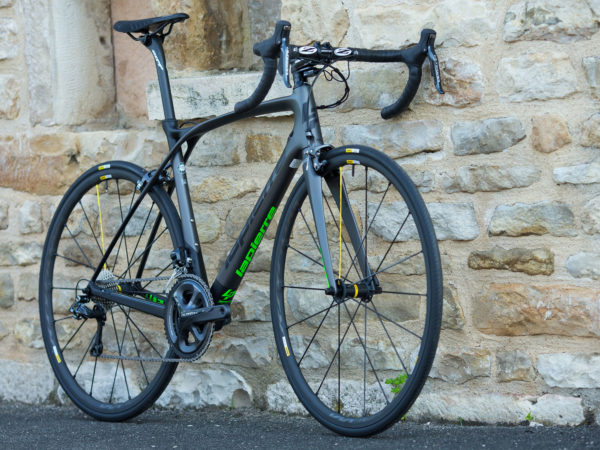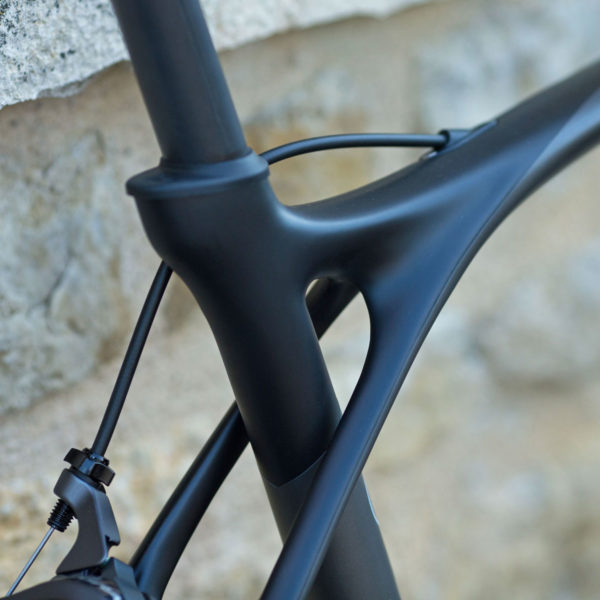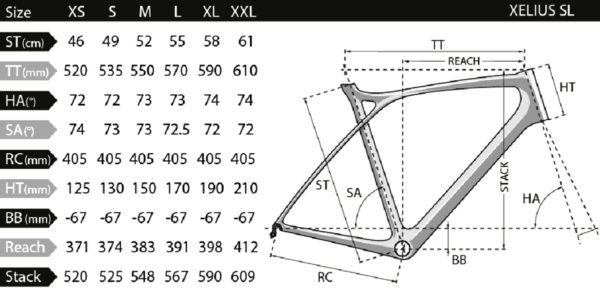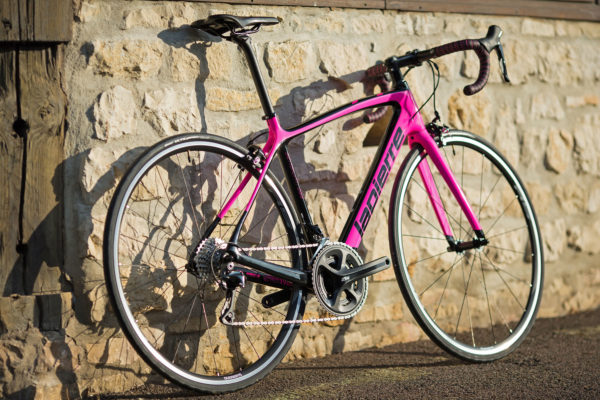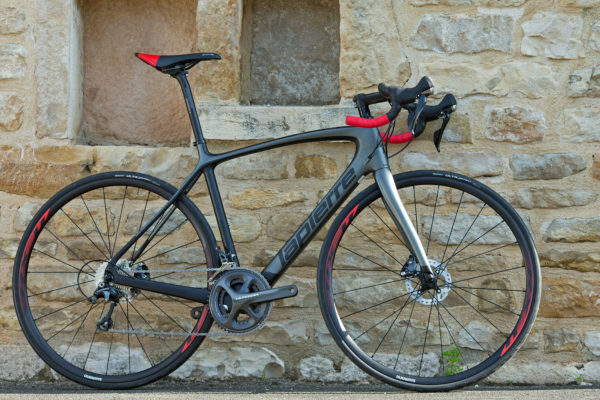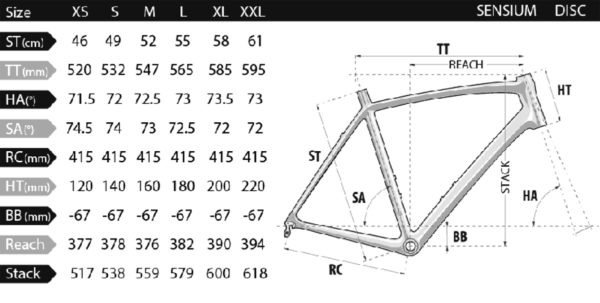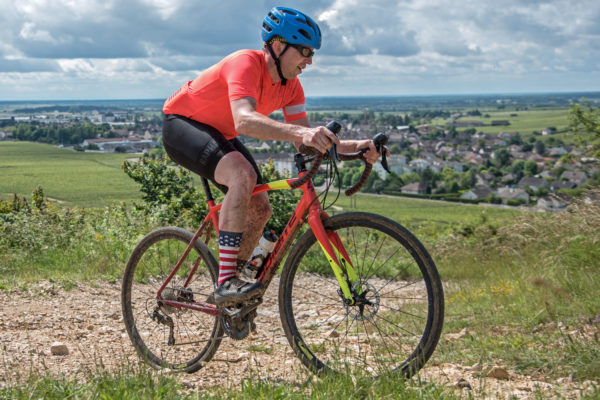
Lapierre introduced a couple of completely new carbon mountain bikes last week, for those into XC riding or a bit of motor-assisted trail riding. But at the same time they’ve debuted five new road bikes as well that cover maybe an even wider spectrum. From the affordable aluminum framed, disc-braked gravel riding Crosshill to a ground-up redesign of their time trial winning Aerostorm DRS there is a little something for everyone, with a heavy lean toward road disc brakes. In the middle is Lapierre’s first every production carbon cyclocross bike with a few tricks up its sleeve/shoulder, as well as the revamped Xelius SL climber’s road bike that now adds a new disc-brake version and the redesigned Sensium endurance bikes with either rim or disc brakes. Get a closer look at each one and their geometry with us after the break…
Crosshill
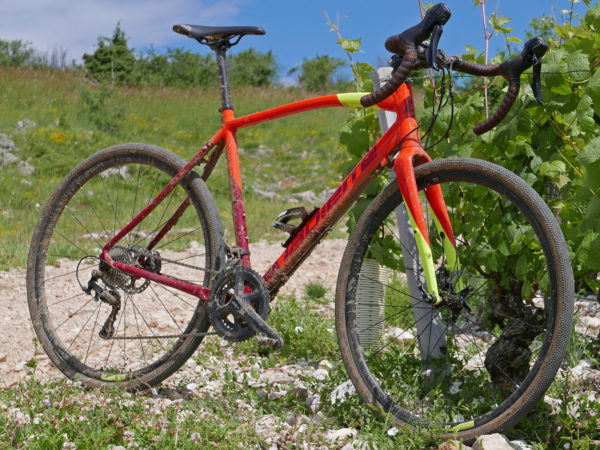
An all-new aluminum all terrain bike, the Crosshill uses the best Supreme 5 multi-butted alloy tubes from Lapierre’s best aluminum road bike for a gravel focus. It uses more relaxed, longer wheelbase geometry than the race cross bikes for a stable ride. It does however share the same full carbon tapered steerer fork with the new Cross Carbon that includes low profile eyelets for fender mounts. Out back the bike includes equally useful mounts on the stays for fenders and a sturdy set of eyelets at the dropouts to mount a rear rack.
Like the carbon Sensiums, the Crosshill gets a curved toptube and seatstays for some added comfort beyond the light tube butting. It then uses a pressfit BB, which seems to have less issues in aluminum frames, and sticks with a standard 27.2 post again for comfort.
The Crosshill is a flatmount disc brake-only bike, with 12mm axles front and rear. Its widely set stays and that big hunking fork leave clearance for up to 50mm wide 700c tires. The total bikes are built around the idea of riding pretty much any type of road or hardpack trail surface and get road compact 50/34 cranks with wide ranging 11-32 cassettes to get up the big hills and 160mm front/140mm rear rotors for powerful braking on the descents.
It’ll be available in 6 sizes, in a 105 build and a Tiagra build option, both with hydraulic brakes, that should make for a solid value to enter into the gravel riding idea.
Cross Carbon
The all-new cyclocross bike uses a unique slanted underside of the toptube designed for comfortable carrying. It works specifically when the bike is carried on the right shoulder, leaned at a bit of an angle kind of diagonally across your back with the right hand holding the bar. I played around with the new bike a bit, and it really is a unique position. It is where the bike naturally falls if you are shouldering for a longer run, but not necessarily where I personally toss the bike up for something shorter line a set of stairs or a short steep runup.
It does get external and top of toptube shift routing, with internal hydro brake routing, to keep the cables tidy, out of the way, and shift wires protected from the elements. But does use a bottom pull front derailleur with a pulley, which tend to pack up with mud. Even though complete bikes will only be offered with disc brakes from what we hear, the frame itself is still built to accommodate either disc brakes or rim brakes, so no matter which option you choose, you end up with an extra superfluous set of brake mounts (and their associated weight and mud collecting.) The bike uses a 12x142mm thru-axle, so might take some custom wheel building or searching for endcaps for spare wheels if you end up with the rim brake model. A 10mm quick release adapter is said to be available as well, which will presumably end up with 135mm spacing.
The frame uses Lapierre’s most compliant and durable High Resistance, 24 tonne carbon (as opposed to the 40 & 46 tonne High & Very High Mod carbon in the TT bike) for a more forgiving and impact resistant ride. It even includes low profile bosses to mount up a full set of fenders for all weather training and riding.
Four sizes of the complete disc brake carbon cross bikes will be available in both a 105 and an Ultegra mechanical build, each with mechanical disc brakes and proper 46/36 cross chainrings and 11-32 cassettes. A frame kit will also be available for either brake setup.
The complete Cross Carbons are fitted with 160mm rotors, Icetech sandwich rotors & finned pads, TrapDoors, and internal Di2 routing.
Aerostorm DRS
Jumping back to somewhat more classic road, the all-new Aerostorm DRS time trial frame kit gets a wholesale reshaping to improve its aerodynamics. Part of that is that the frames get a more compact fit vertically that lets them be set up for a more aggressive position on the bike, with more bar drop and a smaller frontal area. At the same time they get longer front center lengths/frame reach (but steeper seattubes for a similar fit to the current bikes). With that comes an increased wheelbase for both a more stretched out aero position and improved straight line stability.
The new bike employs a further step into aero integration with a fully integrated base bar, stem, and semi-external steerer fork to improve over the current integrated stem/frame concept. Lapierre maintains fit adjustability with 3 stem lengths available, and multi-stack forearm supports, plus a long 10cm long saddle positioning rail.
The bike sees the return of the rear brake back up to the seatstays as part of a new shielded front and rear rim brake caliper setup that the UCI has become much more lenient in allowing for some reason.
The new frame brings with it some new Very High Modulus carbon and more selective layups that lend a 30% boost in rear end stiffness for better power transfer and lateral stiffness in an otherwise rather narrow frame. New carbon also means an overall weight savings, down to a claimed 8.1kg for the medium sized Team FDJ version with Dura-Ace Di2. The bike initially will only come in framekits, available from the beginning of 2017 for next years race season.
Xelius SL Disc & Xelius SL
The disc brake version of the Xelius SL is all-new for 2017. It takes the lightweight, pro race winning frameset and adds predictable all-weather braking. The thought was very much to provide a Pro Tour level disc brake bike for the FDJ team which has been sponsored by Lapierre for quite some time. Of course changes of heart at the UCI meant that the bike didn’t get to have its debut at this year’s Tour de France, but it is still ready to race and will be ready for consumers at the start of 2017.
The new bike gets 12mm axles front and rear with road race standard 100 & 142mm thru-axle spacing. Interestingly complete bikes are to be spec’ed with the smaller 140mm rotors, which when combined with Shimano’s Icetech finned pads and Icetech sandwich construction rotors have been shown to offer heat management able to deal with even prolonged descending. Of course 160mm rotors are also possible with adapters, since that seems to be the going Pro road standard for universal wheel compatibility.
In another effort to ensure heat isn’t an issue the new carbon disc brake bikes are built with a 50°C higher temperature resin to resist the potential for disc brake heat transfer. The new bikes employ flat mount standard brakes and fully internal routing for a clean look. Their 415mm chainstays are also about 10mm longer that the rim-brake Xelius SL to deal with the wider rear end spacing of 12×142.
Like the rim brake bike the Xelius SL Disc has chainstays that connect directly to the toptube for a claim of lighter weight and less stress at the seat cluster, while also allowing a bit more flex for comfort at the seat without compromising drivetrain & handling stiffness from the headtube to the rear dropouts. It also uses the same TrapDoor tech that we’ve seen on their trail bikes and other road offerings for a low COG and out of the way internal battery placement.
The Xelius SL Disc will be available in 6 sizes, plus a new XS size in the women’s version, in Ultegra Di2, Ultegra & 105 complete builds.
The rim brake Xelius SL also gets some updates to the same light climbing bike that Thibaut Pinot rode to his 2015 Alpe d’Huez Tour win. The updated frame includes a new lighter SL carbon layup, and a few mm slightly shorter chainstays for even better acceleration and climbing prowess.
It will be available in the same sizing and similar Ultegra Di2, Ultegra & 105 builds.
Sensium & Sensium Disc
Lapierre’s endurance bike – the Sensium – gets some major updates to both rim and disc brake versions with a more upright position for more long distance riding comfort, while its angles stay the same for classic competition-ready handling. The new bike gets a more curved toptube, plus curved seaststays to allow a bit of inherent flex in the carbon tubes.
The Sensium maintains the same PowerBox concept of stiffness from the headtube through the downtube and chainstays to the drop outs for efficient pedaling and predictable handling, that is seen throughout their road line-up. The new bike sticks with a 27.2mm seatpost for comfort, and the availability of both compact double and triple drivetrains for wide ranging applications. The Sensiums will come in 6 sizes, and a couple of women-specific models with new XS sizing in disc brake and rim brake option, and build kits ranging from Tiagra up to Ultegra.
The disc brake bikes use flat-mount calipers, 140mm rotors front & rear, the same high temp resins of the higher performance disc road bikes, and full internal routing. But they stick with quick release axles. The Sensium Disc also grows its chainstays 3mm over the rim-brake version, even though they both use the same rear hub spacing.
A reworked aluminum version of the new Sensium will also be available called the Audacio, which will share the curved tube design and improved ride quality.
Like the new mountain bikes, final pricing and availability of the bikes won’t be ready until Eurobike at the end of the summer, but you should be able to anticipate autumn arrival at your local Lapierre dealers for the cross and gravel bike, and 2017 availability for the road bikes.
